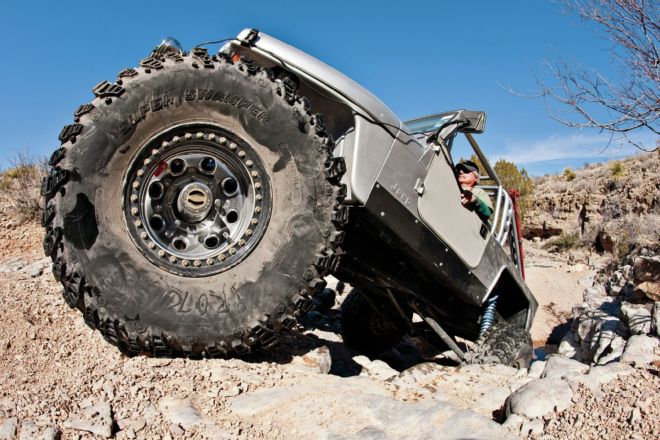
 Harry Wagner
Contributor
Harry Wagner
Contributor
Few upgrades make the same visual statement on your Jeep as your selection of tires and wheels. Determining which wheel material and construction to run isn’t always straightforward though. There are a number of factors to consider, including cost, strength, weight, aesthetics, diameter, width, and backspacing. The order of importance might vary from person to person, but those are usually the deciding factors when shopping for new wheels.
Steel Wheels
Steel wheels have been used on Jeeps since they were spelled with a lowercase “j.” The biggest benefits of steel wheels are that they are inexpensive and strong. You can grind a steel wheel up against a rock and the only thing you typically have to worry about is cutting yourself, not whether or not it still holds air. Should you manage to bend a steel wheel, it can typically be beaten back into shape with a hammer. Also, reinforcing rings can be easily welded on to the circumference of the wheel to strengthen it.
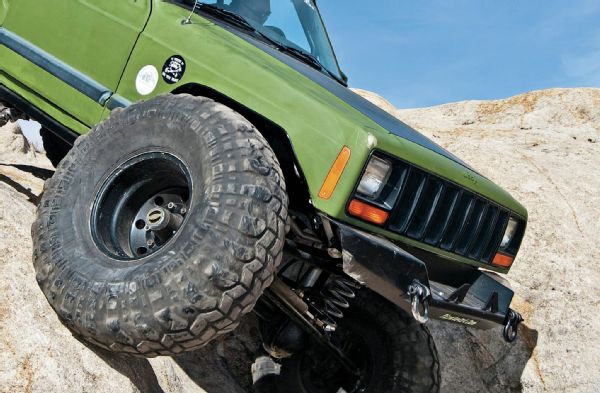 Steel wheels, like these from US Wheel, are strong and inexpensive, making them perfect for a dedicated rockcrawler. They are also available with shallow backspacing, which widens the track width and adds stability and clearance but also increases steering effort.
Steel wheels, like these from US Wheel, are strong and inexpensive, making them perfect for a dedicated rockcrawler. They are also available with shallow backspacing, which widens the track width and adds stability and clearance but also increases steering effort.
Steel wheels are stamped, and as a result, they are typically thinner than a comparable aluminum wheel, making brake fitment easier in tight applications. Steel wheels come in a variety of diameters (up to 17 inches), widths, and backspacing options, although their style choices are limited to whether you want spokes or round holes and black or white or chrome finish. If there is a downside to steel wheels, it is that they are heavy. A typical steel wheel weighs approximately 20 percent more than a similar-sized cast-aluminum wheel.
PhotosView SlideshowCast-Aluminum Wheels
The price gap between cast-aluminum and steel wheels has closed in recent years, with aluminum wheels offered in far more styles and sizes than steel wheels. While rivets and bolts have become popular accessories, they are generally cosmetic, and nearly all cast-aluminum wheels use one-piece construction for strength and simplicity. The downside of cast-aluminum, when compared to steel, is that when subjected to hard impacts, aluminum will break rather than bend. In either case, the wheel will need to be replaced, but it is easier to limp off the trail with a bent steel wheel than a cracked aluminum one.
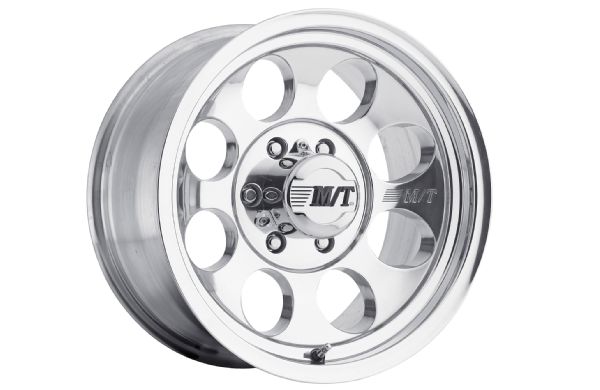 The Mickey Thompson Classic III is a cast-aluminum wheel that is available in a variety of sizes and bolt patterns. The maximum load of the Classic III is more a function of the bolt pattern than the wheel construction. The 5-lug Classic IIIs are rated at 1,900 pounds each, while 8-lug Classic IIIs are rated at 3,250 pounds each, with both using the same construction.
The Mickey Thompson Classic III is a cast-aluminum wheel that is available in a variety of sizes and bolt patterns. The maximum load of the Classic III is more a function of the bolt pattern than the wheel construction. The 5-lug Classic IIIs are rated at 1,900 pounds each, while 8-lug Classic IIIs are rated at 3,250 pounds each, with both using the same construction.
Cast-aluminum wheels are formed by pouring molten aluminum into a mold and machining the surface of the wheel into specification. The liquid aluminum can be poured into the mold directly (gravity cast) or under pressure (low-pressure casting), with the advantage of low-pressure-cast wheel being a more consistent density, thus increasing strength. Cast-aluminum wheels are generally lighter than a comparably sized steel wheel. Weight might not seem like a huge consideration on a Jeep with 1-ton axles and 40-inch-tall tires that is used on the trail, but lighter rolling stock (the combination of the tire and wheel) will improve acceleration and braking and decrease the likelihood of breaking axle components.
PhotosView SlideshowForged-Aluminum Wheels
Forged wheels are both lighter and stronger than either cast-aluminum or steel, and if they do become damaged, they bend and can typically still limp off the trail to be repaired once you return home. So why don’t we see more forged-aluminum wheels on Jeeps? The downside to forged wheels is that they are diffcult to manufacture, and as result, they expensive. Forged wheels are also less common than cast-aluminum wheels. Both Weld and Centerline offer a full line of forged wheels, while other manufacturers such as Raceline and Fuel have both forged and cast-aluminum wheel offerings.
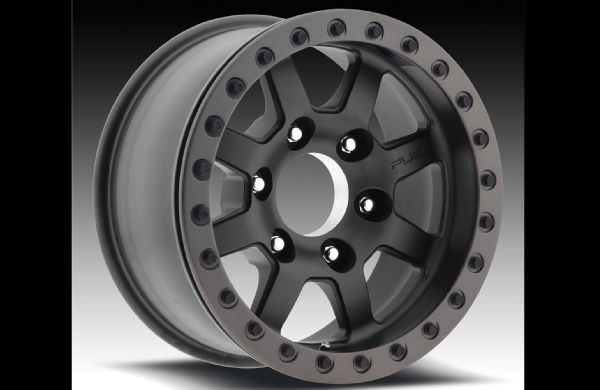 Fuel offers their Trophy wheel in either cast or forged construction, as a beadlock or fauxlock, to fit any budget and application. The cast-aluminum Trophy wheels are comparable in cost and load rating to traditional steel wheels in a 17 inch diameter.
Fuel offers their Trophy wheel in either cast or forged construction, as a beadlock or fauxlock, to fit any budget and application. The cast-aluminum Trophy wheels are comparable in cost and load rating to traditional steel wheels in a 17 inch diameter.
Forged wheels start out as a large mass of aluminum that is formed between two dies, resulting in a density and grain structure that is stronger than a cast-aluminum wheel. Additionally, most cast wheels are constructed from A-356 aluminum, which is only about 60 percent as strong as the 6000-series alloys used for forged wheels. Forged wheels can be either hot forged, which is a faster, easier process, or cold forged, which is the strongest but most expensive, manufacturing technique.
Are Beadlocks Right for You?
Beadlock wheels are available in steel, cast aluminum, and forged aluminum. They can be manufactured as a beadlock from inception or retrofitted onto an existing wheel. Beadlocks also look really cool, which explains the number of faux beadlock wheels on the market. The advantage of actual beadlocks is that they to physically clamp the tire bead to the wheel and allow you to run single-digit air pressures on your Jeep. This provides improved floatation in the sand and snow and allows the tire to conform to rocks and other obstacles on the trail. Just like any other specialized piece of equipment, from locking differentials to winches, beadlock wheels require more maintenance than a standard wheel. They are also often not legal for use on public roads. The bolts should be retorqued after every wheeling trip and replaced if they are damaged or broken.
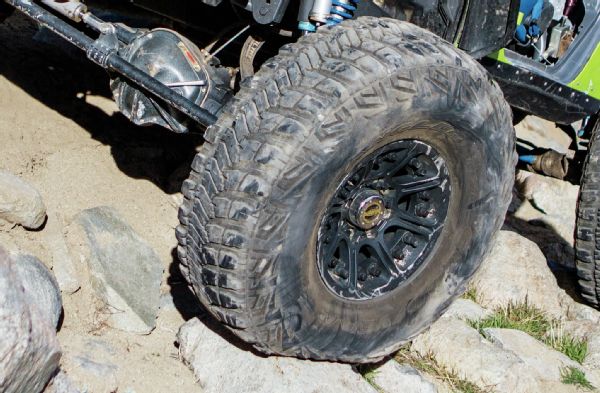 Unlike traditional beadlock wheels that use a ring to clamp the tire bead to the wheel, Hutchinson Rock Monsters are two-piece cast-aluminum wheels with an inner liner between the tire beads that keep the tire on the wheel at low pressure. These wheels use the same bead retention system as military HMMWV wheels, which are also manufactured by Hutchison.
PhotosView Slideshow
Unlike traditional beadlock wheels that use a ring to clamp the tire bead to the wheel, Hutchinson Rock Monsters are two-piece cast-aluminum wheels with an inner liner between the tire beads that keep the tire on the wheel at low pressure. These wheels use the same bead retention system as military HMMWV wheels, which are also manufactured by Hutchison.
PhotosView Slideshow








